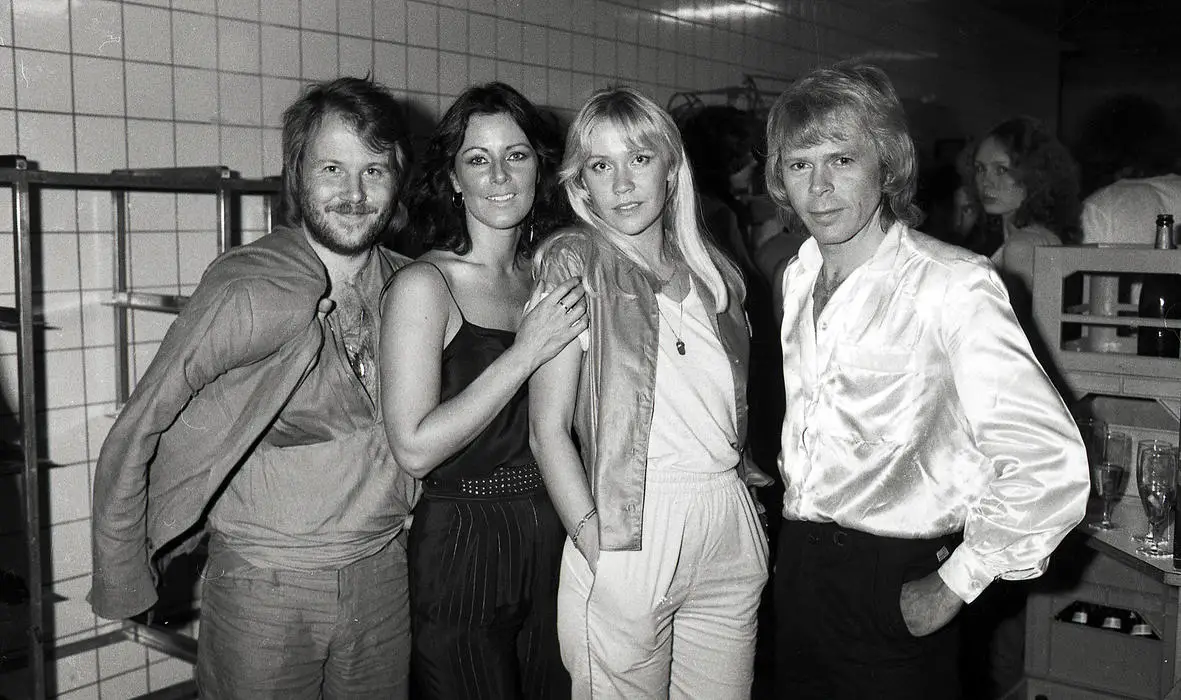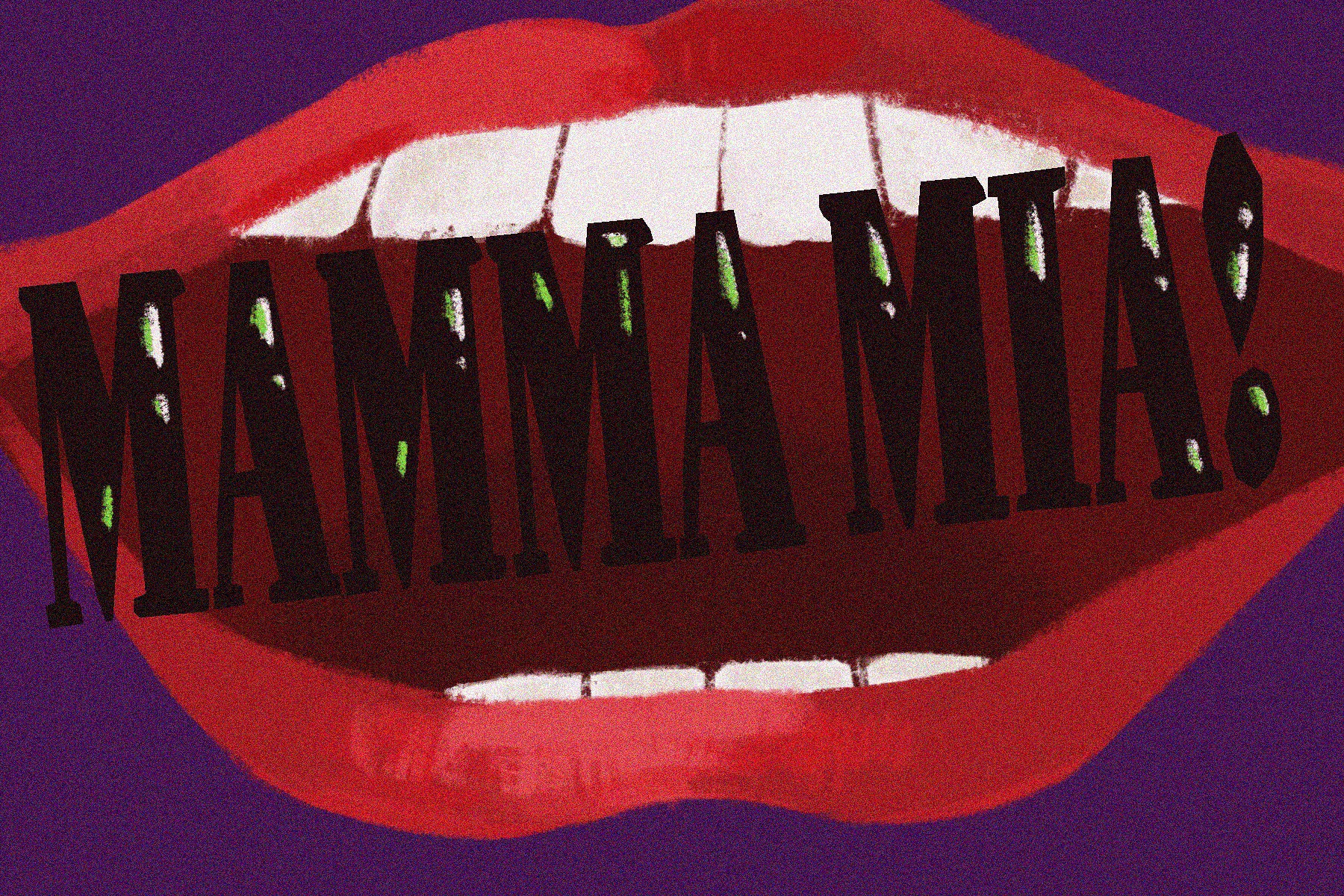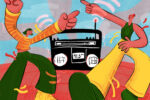Warning: This article contains spoilers for both “Mamma Mia!” and “Mamma Mia! Here We Go Again,” but watching either of these movies for the plot is a grave mistake anyway.
Like every other white woman in America, I went to see “Mamma Mia! Here We Go Again” last weekend and loved it. It has ABBA music, a budget way too big for its own good and a guest appearance from Cher. I truly could not ask for more.
But as I left the theatre with my Anthropologie-clad, Starbucks-loving sisters, I felt strange. It felt like the world had tilted a bit while I was at the screening and I only noticed it now. I felt jumpy and a bit uneasy on my way home, and the feeling lasted for a few days afterward.
That’s a longer film hangover than I dealt with after “Hereditary” — which can only mean that “Mamma Mia!” is, in fact, a horror movie.
That’s right. Don’t let its cheery exterior fool you: the “Mamma Mia!” franchise has the most existential terror of any movie since “Suspiria,” and its plays at innocence only make it scarier. Do not be fooled, do not take your children (much less your mother!) to these movies under any circumstances and bring a paper bag and a vial of holy water to the theater with you.
The ABBA-loving franchise consists of “Mamma Mia!” (2008), based on a Broadway show of the same name, and “Mamma Mia! Here We Go Again” (2018), which acts as both a prequel and sequel to the original. “Mamma Mia!” tells the story of Sophie Sheridan, a 20-year-old who is getting ready for her wedding on the Greek island of Kalokairi.
Sophie has spent her entire life unsure of her father’s identity, and after finding her mother’s diary from the summer she became pregnant, she invites three men — Harry, Bill and Sam, each of whom could be her father — to the wedding. She tries and fails to figure out which of the three men it is, and eventually chooses to walk down the aisle with her mother Donna and accept that she will never truly know her father’s identity.
“Here We Go Again” shows both Sophie’s life five years after her wedding and Donna’s relations with the three young men in the summer she got pregnant. Most of the story is told through ABBA songs and characters dancing with scarves. And it is terrifying.
Now, I know what you must be thinking. “Mamma Mia is a musical. That’s the opposite genre of a horror film, and you, Kylie Harrington, are dumb.” But stay with me here.
Every movie is made to bring up certain emotions in its audience, be that nostalgia, heartbreak, joy, etc. If it’s a well-made movie, it succeeds in eliciting an emotional response while also telling a story. Genres vary in how they balance storytelling and raw emotional appeals, and the horror and musical genres exist on the extreme end of this spectrum.
Both are explicitly designed to get a feeling out of the audience, often at the expense of a logical plot or sufficiently grounded world. Horror directors target fear while musical directors seek to create giddy, get-up-and-dance joy, and both stop at nothing to get that feeling out of their audience.
To achieve this, both genres do away with much of our earthly logic and choose to exist in a dreamlike world, filled with disconnected moments, strange imagery and prevalent symbolism. A great horror movie feels like a nightmare; a great musical feels like a daydream.
The line between those realms is remarkably thin — it only takes a small tweak of context to make joyous singing and dancing look sinister. For instance, imagine sitting at the beach and seeing this wave of people (Meryl Streep included) gallivanting toward you.
Even if you choose to suspend your disbelief, you cannot deny that “Mamma Mia!” shares some key traits with much scarier movies. It focuses on the themes of motherhood and heredity (Toni Collette who?), characters speak from beyond the grave and black horses and goats make prominent appearances. The insistence on living in a world that makes no logical sense, where the uncanny is the norm and no effort is made to explain it away, makes the “Mamma Mia!” movies truly terrifying.
So much ambiguity exists in the “Mamma Mia!” cinematic universe (the MMCU, if you will) that even basic questions such as “When does this movie take place?” and “Can’t she just take a paternity test?” have fluid answers. And the human brain doesn’t like ambiguity — I’ve yet to meet someone who just loves the feeling of not knowing the answer to an important question.
Ambiguity is scary, and horror movies (like “Mamma Mia!”) use that to their advantage, leaving sections of the screen dark, doors just slightly open and relationships between characters undefined. The MMCU suffers from chronic ambiguity and absolutely refuses to treat it, leaving viewers with sweaty palms and queasy stomachs (which, after 223 minutes of runtime, may qualify as an ulcer by now). The movies still have a few key plot holes to stitch up.
In what year is it set?
Sophie is 20 years old when she gets married and invites her three possible fathers to the wedding. The men — Bill, Sam and Harry — look to be in their 50s, and all three were played by actors in their late 40s to mid-50’s. That means that Donna’s three summer of love paramours were in their thirties, which seems almost as implausible as a woman getting married at 20 and her former-hippie mother being okay with it.
Further, when Donna has flashbacks to the men in their youth, they are dressed as if they are in the 1970s, implying that the first movie takes place in the 1990s, even though there is absolutely no indication that it does. The second movie is supposed to take place only a few years after the first, and yet they have smartphones and carefully-placed, modern Windows computers.
The second movie clears up some of this confusion by giving us a clear start date — it lists Donna’s college graduation year as 1979 — but that only makes it more confusing, because it means that the first movie took place around the year 2000 and the second in 2005. Apple didn’t release the first iPhone until 2010, but who knows, maybe Steve Jobs was also feeling the magic of Kalokairi.
What happened to Sam’s children?
At one point in the first movie, Sam tells Donna that she parents Sophie badly and that he knows better because he has two “grown” children. This implies that his children are older than Sophie, meaning he was not only engaged, but also had two kiddos at home when he possibly impregnated Donna. The engaged part made it to the second film, but the children were nowhere to be seen.
What was the order of Donna’s trysts?
The “Honey, Honey” sequence in the first movie clearly lays out Donna’s summer itinerary. First, she went to Kalokairi with Sam and fell in love. When Sam left to return to his fiancée, Donna slept with Bill, and then Harry showed up “out of the blue” to shack up with her for a few nights.
“Here We Go Again” completely bungles this timeline. It shows Donna meeting Harry in Paris, then hopping on Bill’s boat to get to Kalokairi, where she falls in love with Sam. What?
Who is Donna’s mother?
The first movie strongly suggested that Donna’s mother was an old-fashioned Catholic woman who died several years before the wedding. In the second movie, however, she’s a Las Vegas lounge singer played by Cher (who is, by the way, only two years older than Meryl).
How did Donna die?
It’s never explained, she’s just dead.
Does ABBA exist in the MMCU?

A crucial question. “Mamma Mia!” is a jukebox musical based on the music of ABBA, and in the MMCU, ABBA’s music seems fairly popular; everyone knows the words to every song. Is ABBA more popular in the MMCU than in our world? Are they the only music that exists in the MMCU?
Is everyone okay?
It seems that everyone in the MMCU suffers from insanity. First, Sophie sees no problem with having three fathers and not at least hopping on Ancestry.com, and the detail added by “Here We Go Again” makes all the men seem a bit unhinged as well.
The first film implied that Donna had relationships with Sam, Harry and Bill that lasted a few weeks each, but in the second film she spends only about a day with Harry and Bill and maybe a week with Sam. The fact that the men were so enamored by Donna that they would show up to her daughter’s wedding 20 years later sounds terrifying.
I can draw a few potential conclusions here. One, the filmmakers wanted to change the script from the original musical as little as possible and cast well-known actors regardless of their age. Two, Kalokairi is a purgatory-like place that condenses time and space into each other to create a fractured and nonsensical reality.
And three, “Mamma Mia!” hides its disturbing content behind a coat of glitter and go-go boots, subconsciously worming its cognitive dissonance into viewers’ brains and causing them to wake up in a cold sweat with visions of Colin Firth step-ball-changing for the rest of their days. I’d put my money on door number three.
Audiences expect the world to work in a certain way, and the MMCU insists on subverting every one of those expectations. It does not care about logic — it exists only to confuse, terrify and occasionally delight with a peppy cover of “Lay All Your Love On Me.”

















